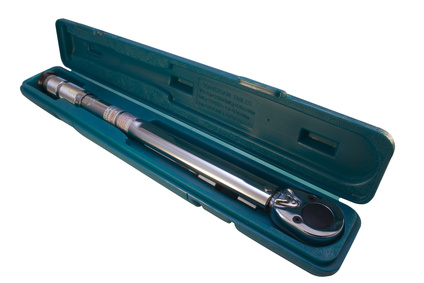
The 4.3-liter engine is available from Ford and General Motors. Ford manufactured a 4.3-liter engine displacing 265 cubic inches. General Motors has three models. In the V-8 line, GM produced a 262-cubic inch and 260-cubic inch engine. GM also produces a V6 260-cubic inch engine. The GM V6 4.3-liter engine is available in both an automotive model and an industrial model which supports multiple fuel types.
When installing the upper intake manifold on 4.3-liter engines, the torque sequence is critical to ensure the pressure is evenly distributed during bolt tightening. Failure to follow helical sequencing may result in gasket failure.
Some intake manifolds may require multiple torque sequences. Each consecutive sequence requires different torque specifications. If multiple torque sequences are required, do not tighten to final specification without first torquing the bolts to the intermediate specifications. Overtightened bolts may result in damage to the head, manifold or gasket.
The Ford V-8 4.3-liter engine's intake manifold is secured to the cylinder heads in three torque sequences. In the first sequence, tighten the bolts to 12 foot-pounds of torque. In the second sequence, tighten the bolts to 20 foot-pounds of torque. In the final sequence, the bolts should be tightened to 22 foot-pounds of torque.
The GM 265-cubic inch intake manifold to cylinder head bolts require 33 foot-pounds of torque.
The GM 262-cubic inch V-8 engine requires 33 foot-pounds of torque to secure the intake manifold to the cylinder heads.
The 4.3-liter General Motors 262-cubic inch engine produced in 1995 and earlier has different torque values depending on the specific model installed.
Engines installed in vehicles with Vin Code W require 35 foot-pounds to secure the lower bolts on the intake manifold, but only 10 foot-pounds to secure the upper bolts.
Vin Code Z engines require 35 foot-pounds all intake manifold to cylinder head bolts except lower rear. The lower rear bolts require 41 foot-pounds of torque.
The General Motors V-6 262-cubic inch engine produced 1996 and later requires three full torque sequencing steps. In the first sequence, the bolts are torqued to only 2 foot-pounds. The second sequencing requires 9 foot-pounds of torque. In the final sequence, the bolts are tightened to 11 foot-pounds of torque.
The intake manifold transfers air from the throttle body to supply the cylinders with air for the combustion process. Stock intake manifolds installed by the manufacturer typically balance costs with performance. The design, construction and materials used affect the actual performance characteristics of an intake manifold. Many after-market intakes are designed to improve horsepower, torque or airflow to the cylinders.